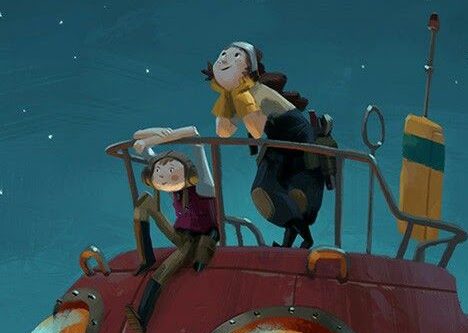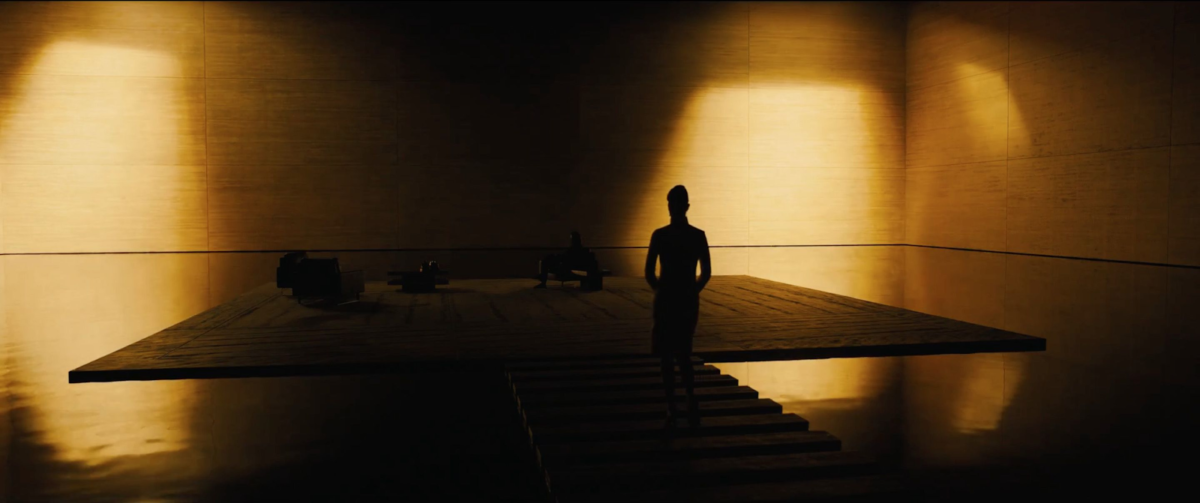Exploring Visual Symbolic Expression
by Meindert Ekkelenkamp
Introduction
In this feature film, the characters, the environments are great examples in expressing how the human state of consciousness of the Blade Runner world has shaped its own habitat. As an example I’ll explore the ‘Niander Wallace’ office building in an attempt to reveal the deeper symbolic structure that lies beneath, how it is presented & what design principles are used to accomplish this expression. For the environment is not only expressing / mirroring the psychological makeup of the inner self of its owner & his place in the world, but it is also expressing his place within the hierarchy on cosmological scale which is rudimentary part of any good story which explores the human condition.
Niander Wallace
was a scientist, replicant manufacturer, technologist and the founding CEO of the replicant manufacturing company, Wallace Corporation.
Most prominent character traits:
- Visually blind but very ‘perceptive’
- Highly intelligent, fierce & sofisticated technocrat
- A brilliant & very calculated strategist
- Has a calm & eerie demeanor
- Has a ‘God’ complex

for more in-depth info about his profile see: https://bladerunner.fandom.com/wiki/Niander_Wallace
Niander’s ‘blindness’
Symbolically refers to being blind for the ‘natural’ state of being or the natural world. He can therefor only ‘see’, ‘view’ & ‘interpret’ the world through artificial eyes. This is symbolically presented by hovering fishlike drones equipped with technical camera lenses which serve as his eyes to the world. This symbolic ‘blindness’ for the natural world is THE main reason why Wallace is not able to find & unlock the last piece in the puzzle of creating life itself; fertility, which resides in the domain of the natural world which he can not perceive. That is why his artificial creations remain barren & sterile, not able to reproduce themselves. He must therefore track down and get hold of Rachel & Deckard’s hybrid miracle child; the bridge between the ‘artificial’ & ‘natural’ world.

The name ‘Niander’ refers to ‘Neander’ which means: New Man. So the name reflects Niander Wallace’s intentions & grand vision of creating a new- yet synthetic composed human being, by means of dethroning God as creator of the natural composed ‘Man’. To accomplish his ultimate goal he must ‘conquer’, ‘unlock’ the last stronghold, the entrance to the garden of Eden; the seat of life itself which resides in the womb of the natural woman. All this in order to finally wield the power of making his sterile creations fertile so they can populate the universe.
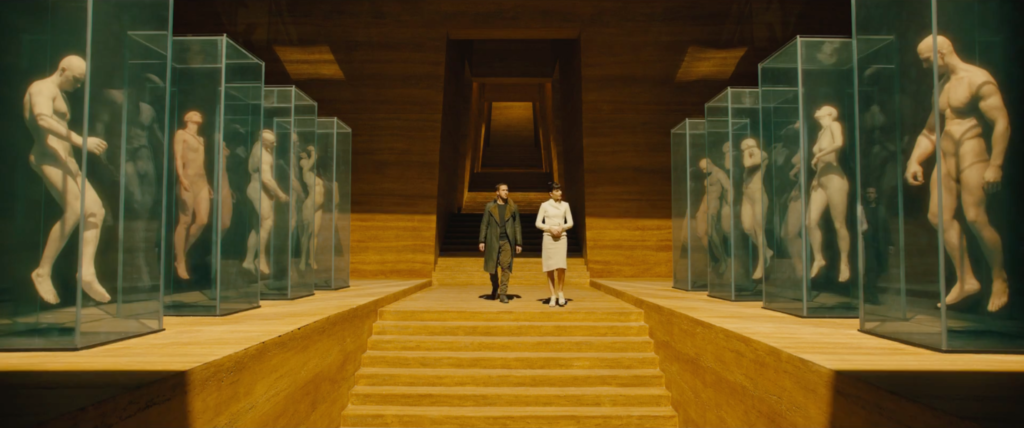
Side note: In today’s world we often interpret the word ‘Man’ for as being the masculine part of humanity. However from its original linguistic meaning, it is a plural word incorporating both male & female. Above a picture of entering the synthetic ‘womb’ of Niander Wallace’s residence displaying a lineup of various models of his artificially created humans.
The ‘Wallace’ Building
Interior Design Language
Introduction
To understand the fundamental design language of the Wallace building interior designs & structure, it’s important to be aware of the underlying symbolic cosmology in which the world of Blade Runner is set. The world of Wallace is manifesting itself by being the artificial counterpart or mirror of the natural world. So to give some concrete examples on how this plays out in terms of design choices:
The ‘Womb’
Within the cosmological structure of the natural world, creation of life is represented by the coming together of spirit & body, (heaven & earth). This through conception, nourishment & birth of a child in the womb of the female. Symbolically speaking, the seed from the man is the ‘spirit’ which is instilled in the women’s womb or in other words; is fused with ‘matter’ the earth. Being the counterpart / mirror of this natural world, Wallace’s artificial creation of life therefore must use the same analogies to match the cosmological structure. How this is expressed in the interior design can be seen in below picture of the ‘birth chamber’:

Also notice how the ‘artificial’ use of materials are evident counterparts of the ‘natural’ world (use of stone, plastic, etc.)
- The sterile square ceiling opening; mimics the organic private female body part.
- The light shining down from the opening; refers to & mimics the divine womb, where life is conceived & nourished.
- The sterile plastic & transparent shaft; mimics the organic female birth canal.
- The square spot on the floor; mimics & marks the ‘space’ the child will inhabit when entering the reality of the natural outside world.
Use of Color
The yellowish color pallet in the Wallace ‘Womb’ space is clearly used as a design element to express ‘artificiality’ throughout the whole film. Consequently therefore the interior spaces in the Wallace building complex are all lit with these yellow color tones to support consistency in the film’s symbolic narrative. The natural world counterpart is expressed with the color green, which is also consistently and purposefully used throughout the film to underline the symbolic meaning. Here an example picture:
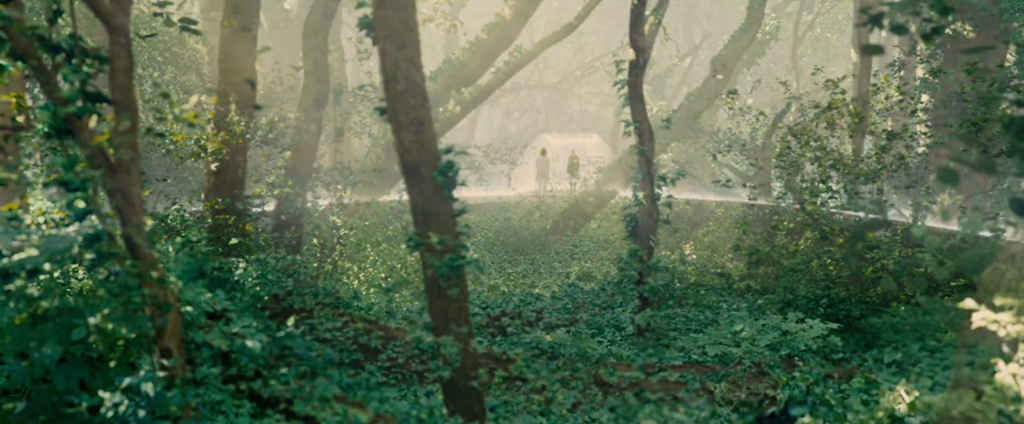
Like in the first Blade Runner movie, the film opens with a close up shot featuring a green colored eye, which again refers to the natural world looking into a world which has taken over or being saturated by artifice.
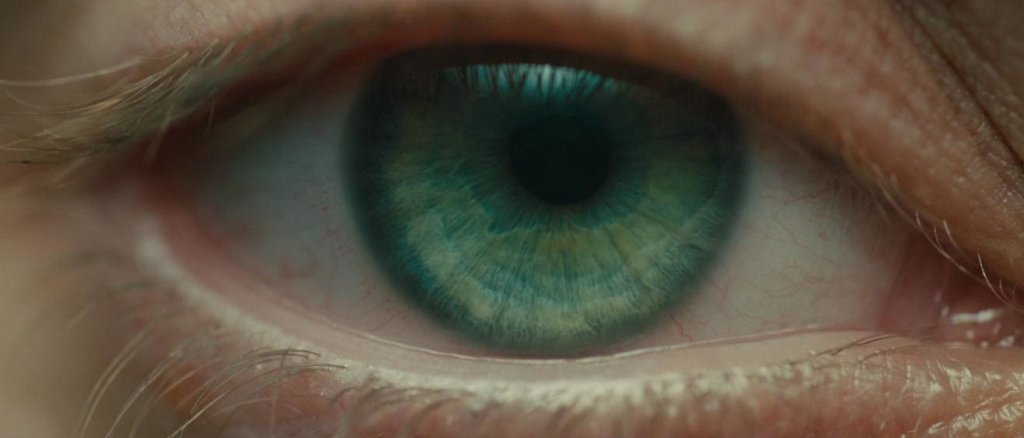
The ‘Heaven’ realm
The place where the ‘Creator God’ & its ‘Angels’ reside. Which again are analogies to the cosmological structure of the natural world which also must be expressed in the artificial counterpart / mirror world of Wallace. As in the natural world, the heaven realm has a strong hierarchical structure which consolidates order of importance, divine power, providence & ranking.
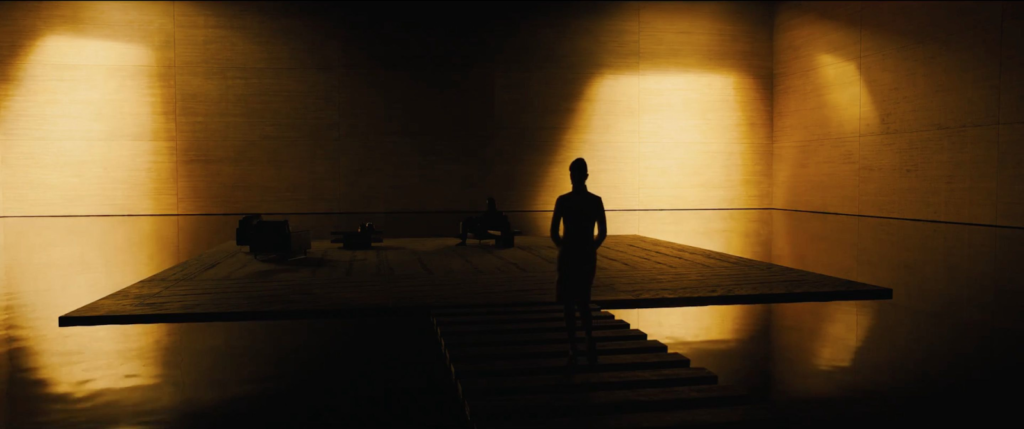


- In the middle picture we see one of the hallways leading to the office spaces & Wallace his ‘throne room’. Again the spaces are square, abstract & sterile in shape & compositional language which contrasts the organic natural world. Notice how the hierarchical cosmological structure of higher to lower order is expressed in going up & down the stairs leading to the throne room, which indicates Wallace’s ranking position within the order; he is the prime creator so his residence is the highest placed room within the total structure.
- But that is just one of the many elements the designers used to firmly underline this symbolic cosmological order. The island on which the throne room is set, is placed ‘above’ the waterline & the other spaces are situated ‘below’ the waterline which marks the order of divinity & power in opposition to Wallace’s slave ‘angels’.
- Also notice the caustic lighting effects in the lower office rooms is a reminder to support this notion of hierarchical structure of cosmological spaces. But also again underlining the ‘womb’ idea where artificial life is being generated.
- But that’s not all; this notion of ‘above’ water & ‘below’ water has strong roots in ancient cosmology. If we dig deeper and frame a picture of a symbolic hierarchical structure of the cosmos, we could get something in the likes of this:

From above cosmic construct we could say that the ‘realm’ in which Wallace dwells is actually not ‘heaven’ or the highest form of ‘order’ but a place right between ‘order & chaos’, ‘semi-light’ & ‘semi-dark’, ‘gas & fluid’, ‘air & water’, etc. His ‘placement’ on the cosmological scale therefore actually makes perfect sense if we take into account what we talked about earlier, of him being a twilight person; very perceptive to the artificial world but blinded to the natural world. Which makes him unable to enter or conquer the Eden / heaven of the natural world. Or in other words, despite his aspirations of being a God, he remains ‘human’.
Though, there is still another interesting thing about the use of water as a symbolic design element in the Wallace building interior designs. If we study the ranking of different natural elements in the scale, we can see that it goes from fully ‘solid’ to fully ‘transparent’. Spiritually speaking, it indicates that the higher you travel on the scale, more will be revealed (enlightened), or the lesser your view is ‘obscured’ or ‘distorted’. So let’s draw an analogy to the office spaces below the water-line & see how that notion is expressed. Standing in the office space, looking upwards through the opening in the ceiling, the image we then see will be distorted by the refraction of the water. So Wallace’s ‘angels’ do not have access to the full ‘clear picture’ of his artificially created reality or heaven. So prohibition is enforced on autonomy, knowledge, self-determination, power, etc. This is only reserved / accessible to the ‘God’ of this twilight realm; Niander Wallace himself. However if we take his own ‘blinded’ spiritual constraint of perception/limitation into consideration and see how that is expressed in the throne room, we come to the following observations:
- The island is situated just above the water-line, indicating that despite his genius abilities, brilliance & intelligence in artifice, he has barely managed to create ‘land’ to establish the 1st state of ‘order’. Because cosmologically speaking; only when spirit & matter meet, order can be established from chaos. This notion of order from chaos is symbolized & expressed by land rising from the water to build a house upon. So by artifice Wallace has gained dominion over artificial land & declared himself God over this land. But Wallace strives for a higher goal; to take over heaven by artifice; trying to bypass the natural order of the universe, creation of life & eventually God.
- This cosmological notion of not yet having access to the natural Eden or heaven realm, is also expressed by the fact that the throne room is enclosed by stone slab; creating a kind of cave like environment. So even though Wallace considers his world as the artificial heaven, in its expression it is conveying more of an ‘underworld’ realm. Which is obscured & hiding from the natural heaven & its God. A dualistic symbolic notion of both rejection & protection; Wallace not able to reach the natural heaven because it is closed off from him by God, but yet also asif he is hiding from the natural world / heaven & needs protection to shield him from it.
- This twilight dwelling between above & below, knowing & not knowing, order & chaos, etc., is also expressed by the constant shifting of light & shadow in the throne room. Which is again a strong symbolic reference to Wallace’s state of consciousness, his place on the cosmic hierarchical scale & the artificial reality of his world. On top of that, the caustic light is also shining from below the water-line, reflecting on the stone slab. Which again is a symbolic reminder of the fact that even though Wallace has managed to arise above the waters of chaos, still he has a distorted view on the higher realm of reality.
Main References & Resources
Interview production designer Dennis Gassner: https://ascmag.com/articles/blade-runner-2049-designing-the-future
Videos on symbolism in Blade Runner 2049:
– Symbolism in Blade Runner 2049 | Finding the Pattern of Reality
– Blade Runner 2049 – Analysis Part 1: An Existential Journey – Symbolism of K, Joi, Ana, & the Horse
– Blade Runner 2049 – Analysis & Discussion Part 2: Water, Eyes, & Color Symbolism (Spoilers)
– Blade Runner 2049 – Analysis Part 3: Love & the Divine (Love, Numbers, & Bees)
Literature on symbolic worldview:
The Language of Creation: Cosmic Symbolism in Genesis by Matthieu Pageau
Blade Runner wiki:
https://bladerunner.fandom.com/wiki/Niander_Wallace
by Meindert Ekkelenkamp
